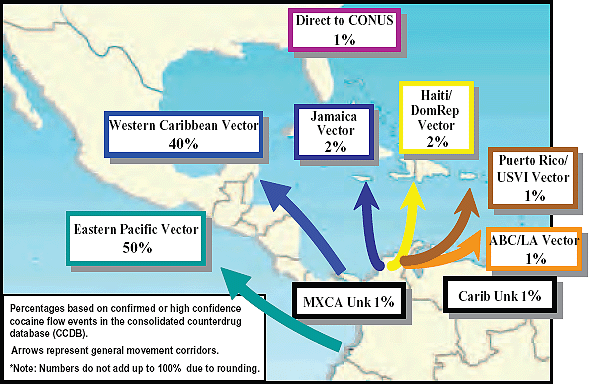After every mass killing, the gun control arguments revive. The prescriptions are familiar: bans on "assault" rifles, "banana clips," and "AK-47s."
Anyone that dares to question any of these is immediately branded a right-wing nutjob or worse -- someone with "blood on their hands."
 |
| Ah, yes. The Solomonic Musings of Code Pink |
This is followed by: "How can anyone be against common sense gun laws?"
Of course, the question begs the question: What is a "common sense" law?
 |
| Profound Wisdom |
Rather inconveniently, mass killings are perpetrated by people who ignore laws. For example, the Newtown killer killed his mother and used her guns to perpetrate his massacre (the Texas church killer should have been denied access but the USAF failed to report his conviction)
The Las Vegas killer acquired his guns legally and then used them to break a number of laws (the most serious, multiple murders).
If laws were ignored in these cases, why would another law "fix" things?
Here's the dirty little secret: passing a law provides no fixes but makes people "feel good." They want explanations, reasons, and "action" after a horrific act -- acts that defy reason, logic, and the social constructs we expect everyone to live by. The demand to "do something, now!" is reactionary, and ultimately results in flawed fixes because these problems are deep and intractable.
Quite frankly it doesn't matter who "feels" good or bad about any law. Rather, is the law is Constitutional? Does it clearly address the problem while not unduly inconveniencing the innocent?
If we wanted to eliminate illegal drug use, we could pass a law that requires a full background check of each person being issued a prescription, to include a list of all drugs dispensed to date.
Of course, your wait at CVS would be a couple of hours but -- Hey! Aren't you upset about all these drug overdose deaths??
Clearly, burdening the law-abiding with unnecessary delays and inconveniences would be bad law.
Therefore, we should be able to agree that "common sense" law would be focused on malefactors, not innocents.
So, do we need "common sense" laws to ban "assault" rifles?
First, the definition of "assault rifle" is ambiguous. For people unfamiliar with firearms, any rifle with a black stock is an "assault rifle." For others, the AR-15 is the definition of an "assault rifle."
Over four million rifles are sold annually, with at least one million sold designated as an "AR-15" style.
That's at least five million AR-15 type rifles in private hands in the USA.
(Many of those AR-15s shoot .22 caliber, a small rimfire cartridge that is intended for targets and very small game -- hardly a "weapon of war")
One AR-15 is used in a heinous crime and suddenly the other 4,999,999 AR-15s present a menace?
It's interesting that victims are typically trotted out as the sole possessors of virtue after every tragedy, insisting that we "do something" immediately.
Thankfully, the Founders understood the vagaries of mob behavior, and choose to institute a government structure based on deliberation and compromise.
Sadly, some issues do not lend themselves to compromise, as we learned in the 1860s. Slavery was either lawful or not.
It's the same with abortion. Any "compromise" about abortion simply shifts the murder date.
Guns are similarly difficult compromise topic. Individuals either can possess and carry guns or they can't.
Some will argue that registration, limits on quantities and times, and more stringent background checks are "common sense" compromises. "Who can possibly be against these common-sense measures? We have to stop the killing!"
The implication is that anyone who disagrees has no "common sense." Further, anyone rejecting "action now!" is somehow complicit in murder.
It doesn’t matter that much of our gun violence is gang-related. It doesn’t matter that you can find far fewer guns
per capita in most of South America, yet much higher rates of violence. It doesn’t matter that most of our gun crime occurs in American cities.
 |
| The Flow of Cocaine into the US |
 |
| Drug Cartel Handiwork in Mexico (The Mexican Constitution guarantees the right of Mexicans to possess arms. Even so, gun control laws in Mexico are very strict, and police discretion in enforcement makes possession of firearms of greater than .22 very difficult. see: http://www.davekopel.com/Espanol/Mexican-Gun-Laws.htm) |
Let's drop the pretense: "common sense" means "guns out of the hands of the citizenry."
Listen carefully and you'll quickly learn they want them all, and they won’t be happy until they have them all.
An interesting hiccup in all this "common sense" is the complete faith and trust in police as the only rightful gun holders -- the same police we're told run rampant, targeting and shooting people indiscriminately. The same police that are convicted of a higher percentage of felonies than Concealed Carry permit holders. See Research Paper Here
People should be honest about their intentions, but they're not. Thus, the use of incrementalism to achieve an end in a way that can be successful in a pluralistic democracy.
The NRA and other folks who support the right for individuals to keep and bear arms took note of the incrementalist strategy used to demonize tobacco.
While I was the first to applaud the end of smoking in restaurants and hotels, it's very instructive that the current outright ban was accomplished over time using incremental steps: First restaurants were required to be divided into smoking and non-smoking sections. Then smoking was forbidden inside restaurants. Not long after, smoking was forbidden at entryways. Now, people are being sued for the effects of "third-hand smoke." (see article
here, and Mayo Clinic article
here)
Each incremental step was "common sense."
But in aggregate it imposed a Government-empowered will of the majority on the minority in a way that was impossible to defend.
Those of us who support the right to "Keep and bear arms" have learned from that inexorable slide and have determined we won't accept "common sense" advice from people who can't distinguish a magazine from a clip.

































